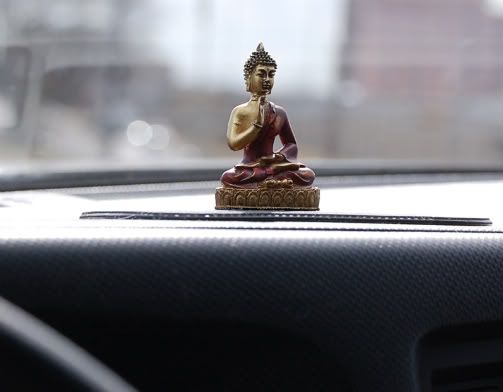There’s no doubt that this is the sensation true drivers experience when they find their perfect ‘fit’ – that car that connects with them and becomes a part of their body.
Some people, such as Michael Schumacher, have an inherent talent that lies in their ability to somehow know how the car will feel and react in a multitude of different circumstances.
But it can be somewhat learned. I think most people don’t understand the appeal of spirited driving because they haven’t experienced the sensation of being at one with a car. And at the risk of endearing myself to crazy people, I have to say that it’s the same with guns. In controlled, safe environments, it can be tremendous fun honing your skills with a mechanical instrument that acts as an extension of your body.
Recently there was an article in New Scientist about how the brain sees tools, such as toothbrushes and mechanical grabbers, as extensions of the body (27/6, p17). Researchers stated that this was “the first evidence that tool use alters the body schema (map).” I couldn’t help but think that none of these researchers had ever driven a stripped-out Golf GTi around Silverstone.

Genuine driving enthusiasts and racing drivers have known of this hypothesis for years. They know the feeling of being at one with the car. They understand that often when they’re driving, they’ll make an input or correction that they’re completely unaware of. Their brain is already compensating for how the vehicle responds before they have any conscious awareness of what is happening.
A month back I was driving a mate home from seeing a band in the middle of nowhere. On a slippery road (a private road, of course…) away from other cars and residents, I coerced the car into a relatively low speed slide at a 90-degree corner. Afterwards Hagger pointed out to me that I had started pulling the wheel back to centre even whilst the car was mid-swing. Now, I’m no Schumacher, but since I was a young teenager I’ve been pushing cars into drifts (or power slides as JC calls them). So although I didn’t recall exactly what I had done to ensure that brief moment of fun ended safely, I trusted my experience enough to attempt it in the first place.
In the very, very distant future, when the time comes for me to become a father, my kids are going to be strapped into a car and forced to compete in motorkhanas – whether they want to or not. From an early age I want my children to understand the relationship between driver and car. I want them to know that just because you want the car to stop, it doesn’t mean it always will. How, as BKS wrote recently, cars react in dramatically different ways depending on the conditions. And as much as I want them to sharpen their reactions behind the wheel, I also want them to enjoy the experience of using a car as an extension of themselves, just as much as I do.


